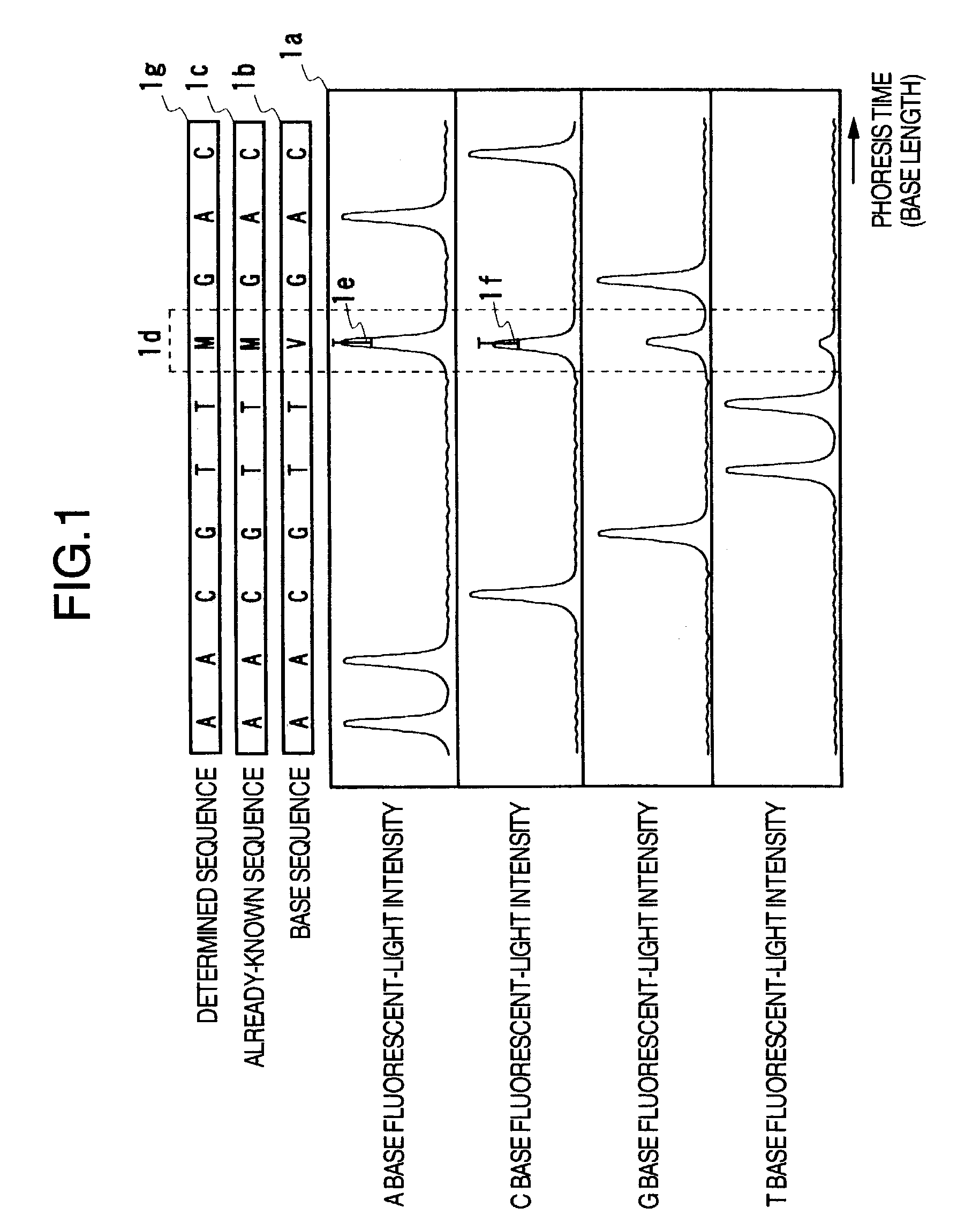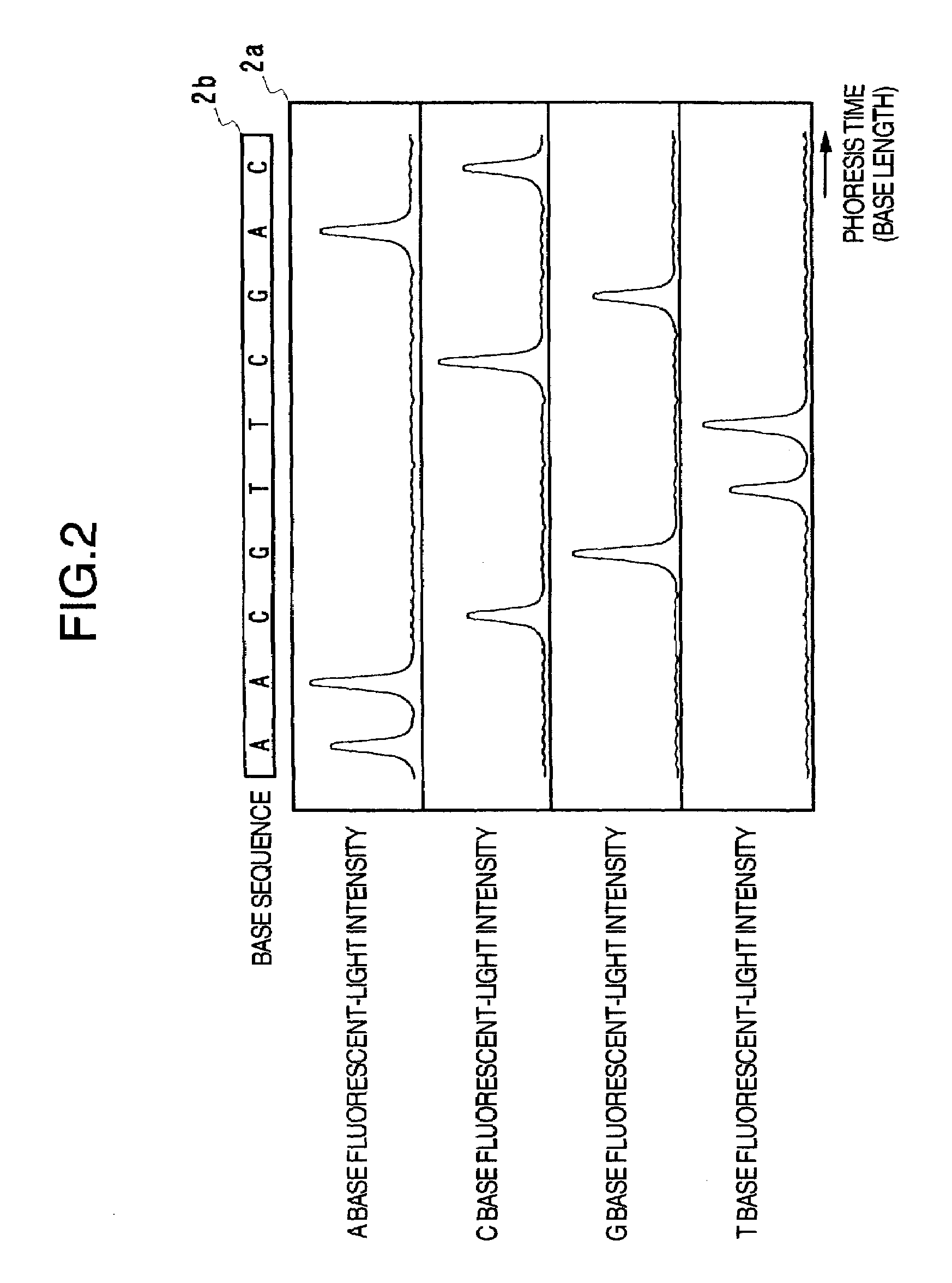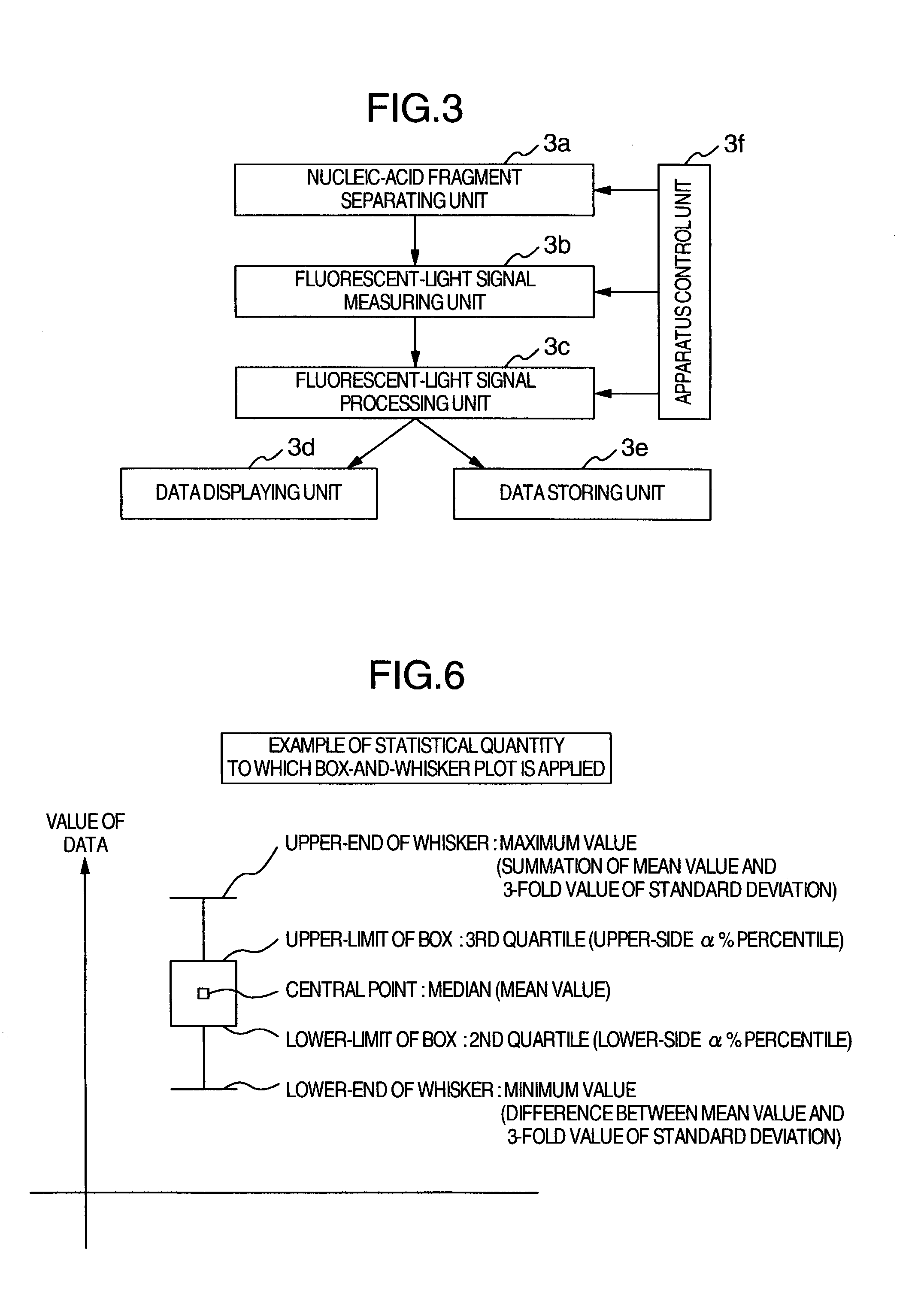Nucleic acid base sequence determining method and inspecting system
a nucleic acid base sequence and inspection system technology, applied in the direction of biomass after-treatment, fluorescence/phosphorescence, instruments, etc., can solve the problems of requiring time and labor to do the inspection, and requiring two-fold time and labor
- Summary
- Abstract
- Description
- Claims
- Application Information
AI Technical Summary
Benefits of technology
Problems solved by technology
Method used
Image
Examples
Embodiment Construction
[0037]FIG. 3 illustrates the configuration example of a nucleic-acid base sequence determining apparatus to which the present invention is applied. This apparatus includes the following configuration components: A nucleic-acid fragment separating unit 3a for electrophoresis of fluorescent-light-labeled nucleic-acid fragments so as to separate the nucleic-acid fragments on the basis of differences in the base lengths, a fluorescent-light signal measuring unit 3b including components such as an optical appliance for irradiating the separated nucleic-acid fragments with laser light and a detector for detecting fluorescent-lights thus generated, a fluorescent-light signal processing unit 3c for performing a signal processing to the measured fluorescent-light intensity waveform data so as to determine the base sequence and the like, a data displaying unit 3d for displaying the fluorescent-light intensity waveform data, the determined base sequence, and the like, a data storing unit 3e fo...
PUM
| Property | Measurement | Unit |
|---|---|---|
| nucleic-acid base sequence analyzing | aaaaa | aaaaa |
| fluorescent-light intensities | aaaaa | aaaaa |
| fluorescent-light intensity | aaaaa | aaaaa |
Abstract
Description
Claims
Application Information
 Login to View More
Login to View More - R&D
- Intellectual Property
- Life Sciences
- Materials
- Tech Scout
- Unparalleled Data Quality
- Higher Quality Content
- 60% Fewer Hallucinations
Browse by: Latest US Patents, China's latest patents, Technical Efficacy Thesaurus, Application Domain, Technology Topic, Popular Technical Reports.
© 2025 PatSnap. All rights reserved.Legal|Privacy policy|Modern Slavery Act Transparency Statement|Sitemap|About US| Contact US: help@patsnap.com



